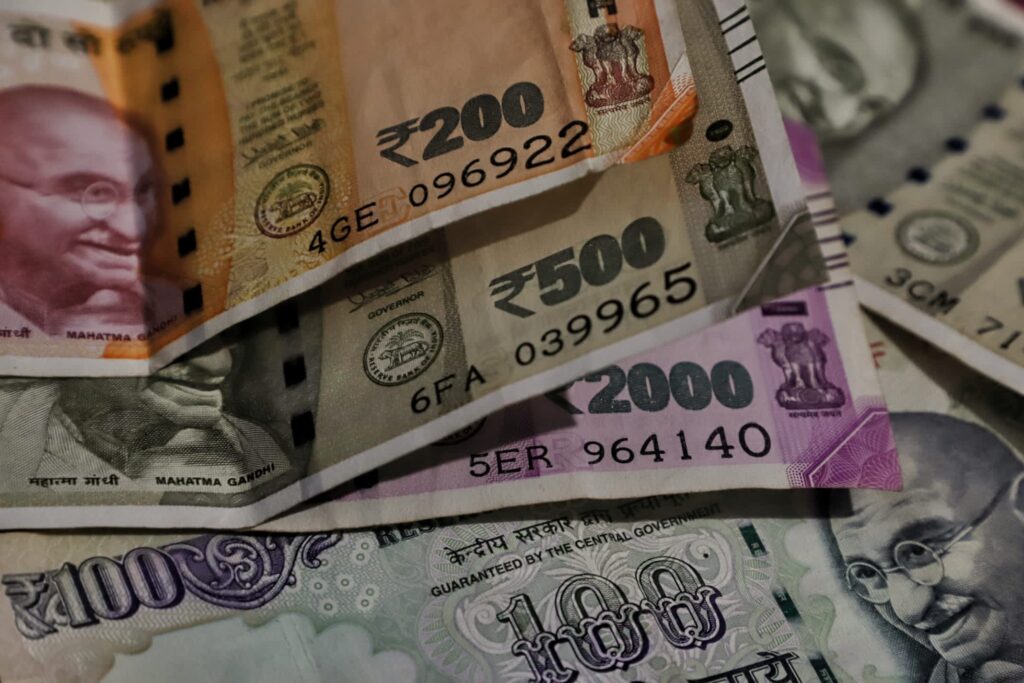This thorough analysis traces the fascinating development of India’s monetary system, a story that is intricately entwined with the development of the country’s economy over many centuries. This study goes into India’s rich economic history and its subsequent influence on global markets, from the early roots of punch-marked silver coins to the sophisticated digital transactions of today. It goes on to examine how India’s monetary and fiscal policies, its reliance on oil imports, and the prospective introduction of ASIC mining operations powered by renewable energy could open the door for significant changes in the country’s and the world’s economic environment.
The development of Indian currency is a fascinating story that charts the country’s economic development over many centuries. India’s monetary system began to take shape with the introduction of punch-marked silver coins in the sixth century BC, which were later replaced with cast copper coins during the Mauryan empire. The Gupta period, which lasted from the fourth to the sixth centuries AD, saw the introduction of gold and silver coins known as Dinara and Rupaka, respectively.
The Islamic Sultanates and the Mughal Empire, which ruled from the 12th to the 19th century, dominated the following era. The silver Rupiya was introduced and standardized during this period. There were also a lot of gold Mohurs around during this time. The dynamics of the country’s economy underwent a substantial change with the arrival of the British East India Company in the 17th century. The silver Rupee and gold Mohur were among the coins that the business struck in its own image.
In 1858, the British Crown took over direct rule over India, maintaining the Rupee as the country’s main currency. The Presidency Banks’ financial institutions came together to form the Imperial Bank of India, which later became the State Bank of India, in 1866. The present banking system in the nation was established during this time.
After gaining independence, the country continued to use the British-style rupee until 1957, when a decimal system was implemented and the rupee was divided into 100 “paise.” The Reserve Bank of India (RBI), which was founded in 1935, became the central banking organization in charge of issuing money. In order to fight corruption and the circulation of illicit money, larger denominations, such the 500 and 1000 Rupee notes, were gradually issued but later demonetized in 2016. They were replaced by the new 500 and 2000 Rupee notes, signaling a significant shift in the country’s economic strategy.
The value of the rupee and India’s economic policies have a significant impact on the world economy. Changes in India’s fiscal and monetary policies, notably those pertaining to its currency, have an impact on global markets because India is one of the fastest-growing economies in the world. The size of the country’s consumer market, the growing middle class, and its robust service industry make the value of the Rupee a topic of concern on a worldwide scale.
A change in the economy of the country has also been sparked by India’s push toward digital commerce, which has been made possible through platforms like UPI, digital wallets, and online banking. A significant portion of the informal economy is brought into the formal economy as a result of the digital financial revolution, which significantly lowers transaction costs. Other emerging economies closely observe it and might follow its lead.
The dynamics of India’s international trade are heavily influenced by the value of the rupee. Indian products and services are more affordable to international consumers when the rupee is weak, thus boosting exports. In contrast, a higher Rupee may result in cheaper imports but may also reduce the competitiveness of exports.
The rupee and the Reserve Bank of India (RBI): The RBI is crucial in controlling the value of the Rupee to maintain macroeconomic stability. To control the exchange rate of the Rupee, it can intervene in the foreign currency market by purchasing or selling foreign currencies, notably the U.S. Dollar.
India relies largely on imports to meet its demand for oil because it does not produce a sizable amount of oil locally. Only about 15% to 20% of the nation’s consumption needs are met by domestic crude oil production, which is insufficient to meet the nation’s needs.
The majority of India’s oil needs are imported from other nations. For instance, India bought over 4.5 million barrels of crude oil per day in 2020, mostly from Middle Eastern nations like Iraq, Saudi Arabia, and the United Arab Emirates but also from the United States and Nigeria.
It’s crucial to remember that these numbers can alter depending on a variety of variables, including shifts in domestic production, adjustments in governmental policies, changes in the price of oil globally, and fluctuations in demand.
The prospective changes in energy regulations in nations that rely largely on imported oil have given me more reason to be optimistic about some ASIC mining initiatives, such as those for Litecoin and Bitcoin. In this situation, it is crucial to comprehend the relevance of using renewable energy for ASIC mining operations. India hopes to lessen its reliance on oil imports as it begins its journey to develop a Central Bank Digital Currency (CBDC) and encourage the integration of renewable energy technology. Potential government support for ASIC mining infrastructures powered by renewable energy sources in India might result in significant financial infusion and resource expansion, having a good knock-on effect for the country and its people.
Following the convoluted course of India’s financial history offers a compelling narrative of the country’s economic resiliency and development. The history of India’s economic development is absolutely remarkable, stretching from the invention of silver coins in the sixth century BC to the sophisticated digital financial systems of today. Strong indicators of India’s potential for sustained economic growth include the development and management of the rupee, the country’s heavy reliance on oil imports, and the hopeful outlook for ASIC mining operations powered by renewable energy. India is prepared to reshape its economic landscape, inspire developing economies, and continue to play a vital role in determining the course of the global economy as it stands on the verge of establishing a Central Bank Digital Currency and further integrating renewable energy technologies.






